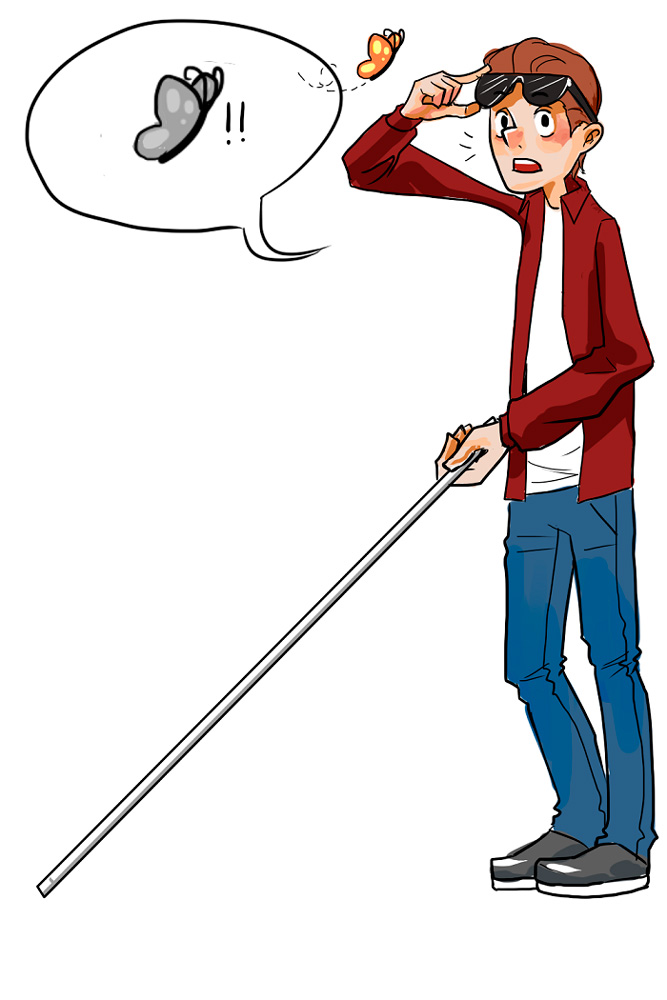Rishika Kenkre
Staff Writer
A surgeon from Texas will force a needle with viruses composed of DNA that has light-sensitive algae into a blind person’s eye, enabling the person to see in black and white.
This experiment, funded by a startup named RetroSense Therapeutics, is the initial test of optogenetics. Optogenetics is a biological method that deals with the use of light to control cells in living tissue, integrating optics and genetics. The neurons can be manipulated to turn the light on and off.
The study will be done by medical professionals at the Retina Foundation of the Southwest. Those performed upon have retinitis pigmentosa, a degenerative disease resulting from the progressive deterioration of the photoreceptors of the retina. The researchers’ goal is to create DNA of ganglion cells, which contain many nerves and are generally connected by synapses.
“We work with patients that have retinitis pigmentosa, which is a blinding genetic eye disease,” Chief Science and Executive Officer and Director of Retina Foundation David Birch said in an interview with The Bottom Line. “These people began by losing their night vision, their side vision and at one point they have tunnel vision, which gets smaller and smaller. Finally, they lose all their vision, especially at their fifties. Our research is based on the idea that they are losing their photoreceptors, their rods and their cones. What would happen if we made the remaining cells, the ganglion cells, light-sensitive? The goal of the program is to put a light-sensitive pigment genetically into the remaining cells in the retina.”
Neuroscientists will closely examine this study and try to relate this research into treating other diseases, such as mental illness or Parkinson’s. It can be used to fix cocaine addiction, decrease OCD symptoms and revert lack of motor skills.
In this scientific research, the study relies on gene therapy and providing cells with additional genetic material.
Around a decade ago, a group at Stanford found a method to direct the activity of certain neurons with great accuracy. To do this, they made use of an essential protein called channelrhodopsin-2 (ChR2) that opens up when it encounters blue light and even permits molecules to flow through.
A human’s brain cells turn out by means of opening certain types of channels along their outer membranes. Humans’ brain cells start working through means of opening various kinds of channels along their outer membranes. As they open, ions quickly move into the cell, generating an electric current. Once it strengthens enough, the body of information goes across the neuron and then travels on to its downstream counterpart. As the process happens many times, neural networks are activated.
The Stanford group managed to succeed in turning the neurons on and off, and even directing the protein to specific populations of neurons, enabling the brain circuits to be turned on whenever in mice. Although this is an extraordinary achievement, researchers have wondered if it could be done with humans after they found this out.
An issue arose with having something that produces light directly shine light on neurons with ChR2. Fortunately, Dr. Zhuo-Hua Pan thought of the method of using the eye instead of traveling deep in the brain.
The character of the eye being transparent and connected to the visual cortex enables it to naturally respond to light. With the addition of CHR2 proteins, the natural sunlight has the ability to turn them on without other mechanisms.
After six years of creating a plan, RetroSense submitted it to the FDA. The gene producing ChR2 will be injected, with the virus, into the retina with a thin needle.
Still, ChR2 cannot detect light as well as our normal retina cells, causing the patients’ vision to fade in poorly lit indoor areas and at night.
In addition to this company, Circuit Therapeutics has formed a treatment for chronic pain.
“We are just beginning,” Birch said. “We have no idea what it is gonna look like … But we turn people that are completely blind into patients with some normal vision. However, it is not going to be great vision because they don’t have the normal retina.”











